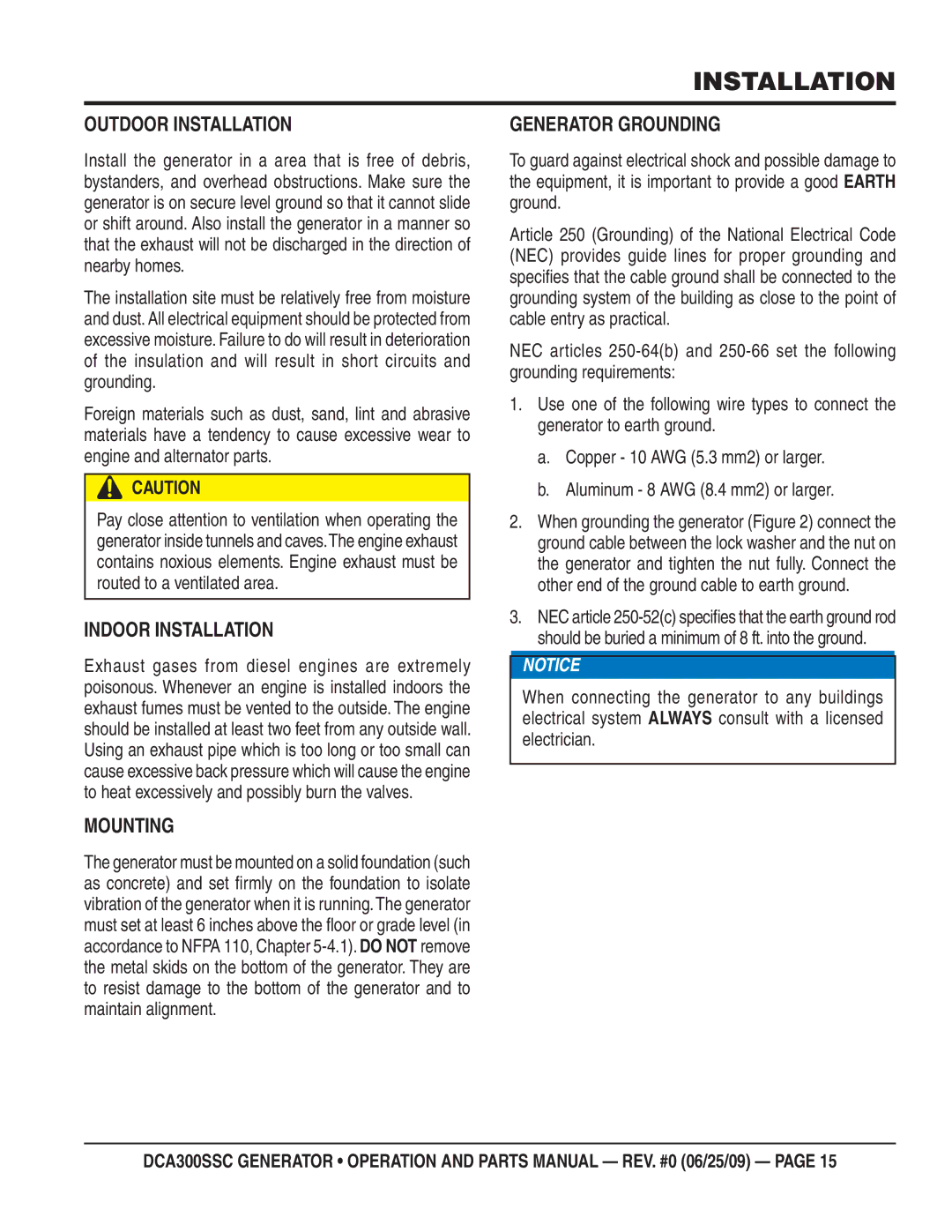DCA300SSC specifications
The Multiquip DCA300SSC is a durable and powerful skid-mounted diesel generator designed for a range of applications, including construction sites, events, and emergency backup power. With a robust operational capacity of 300 kilowatts, this generator stands out for its reliability and efficiency in providing continuous power.One of the key features of the DCA300SSC is its commercial-grade engine. The generator is equipped with a reliable and efficient diesel engine that ensures optimal performance under various operating conditions. This engine is designed for durability and longevity, minimizing the need for frequent maintenance. The generator's high fuel efficiency reduces operational costs, making it an economical choice for businesses and contractors.
Another notable characteristic of the DCA300SSC is its advanced sound attenuation technology. This design feature significantly lowers noise levels during operation, which is essential for applications in populated areas or sensitive environments. The generator is housed in a weather-resistant enclosure that protects it from environmental factors, ensuring consistent performance regardless of weather conditions.
In terms of power management, the DCA300SSC is equipped with a sophisticated digital control panel that allows users to monitor and manage the generator’s performance effectively. The control panel displays vital information, such as voltage, frequency, and run-time hours, facilitating easy operation and troubleshooting. This technology also integrates automatic voltage regulation, enhancing the generator's stability and safety during operation.
Safety is a priority in the design of the DCA300SSC. It is built with multiple safety features, including low oil pressure shutdown, high coolant temperature shutdown, and over-speed protection. These measures provide peace of mind to users by reducing the risk of equipment failure and ensuring safe operation.
The compact design and skid-mounted configuration of the DCA300SSC allow for easy transport and installation, making it a versatile solution for a variety of industries. Additionally, the generator can be configured for different voltage outputs, further increasing its adaptability for specific applications.
In summary, the Multiquip DCA300SSC is a powerful and versatile generator known for its reliability, efficiency, and advanced features. With its durable construction, advanced sound attenuation, user-friendly control panel, and robust safety features, it meets the demands of both commercial and industrial applications with ease. Whether for temporary power supply or backup generation, the DCA300SSC is a suitable choice for professionals seeking dependable energy solutions.

